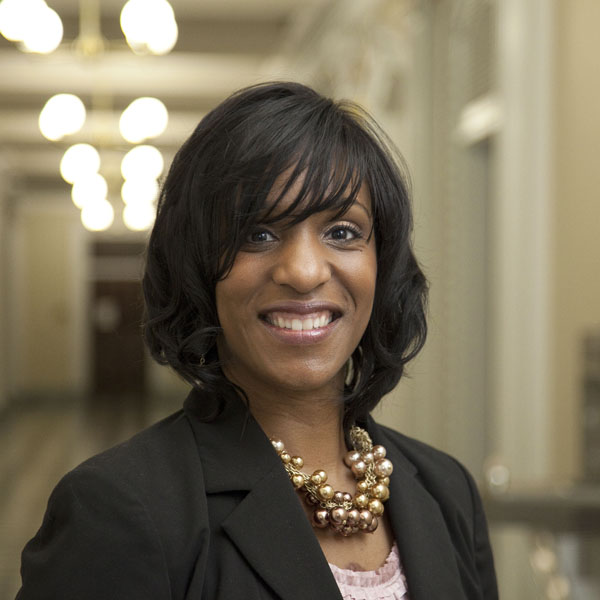

On December 9th, the White House honored twelve individuals as Champions of Change in America. They were recognized for their efforts to recruit and retain women and girls in science, technology, engineering, and mathematics (STEM) fields. I am humbled to be selected as one of those twelve individuals and share this honor with numerous mentors and colleagues with whom I have had the tremendous opportunity to collaborate on research.
Two years ago, President Obama’s Educate to Innovate campaign was launched to improve the nation’s participation in STEM, particularly for youth. Among the three pillars of this campaign is the commitment to “expand STEM education and career opportunities for underrepresented groups, including women and girls.” My scholarship supports this third pillar by contributing research evidence to the STEM discourse on the impact of cultural factors on academic and career outcomes. My goal is to increase the effectiveness of interventions designed to advance gender and racial/ethnic equity in STEM. My work complements the knowledgebase on the “what” of science education with additional understanding of “how” race and gender variables may relate to STEM academic and career development.
My experience is drawn from working mainly with three groups over the last 10 years:
- Middle school girls grades 6-8 in science & engineering career days through the “Expanding Your Horizons” program at the University of Wisconsin-Madison; http://www.eyh.wisc.edu/
- Undergraduate STEM students: underrepresented racial/ethnic minority students and women in science and engineering
- Graduate underrepresented racial/ethnic minority students in biological and behavioral sciences
I want to encourage a larger dialogue on the nexus of culture and career development, particularly in STEM.
Addressing Culture. Recruitment and retention of all individuals, in general, and underrepresented groups, in particular, are more complicated than stimulating interests and abilities in STEM. Using social cognitive career theory, my research with racial/ethnic minority women and men in science and engineering at several universities indicates that self-efficacy beliefs (or confidence) to complete a STEM degree and positive outcome expectations (consequences one anticipates from pursuing a given task) are significantly associated with STEM interests and goals that lead to eventual pursuits. For STEM students at a predominantly-White institution in my sample, comfort interacting with individuals outside of their own ethnic group is positively related to academic self-efficacy. For STEM students at a historically-Black university in my sample, an established ethnic identity (identification with being African American) is positively related to outcome expectations (e.g., other African Americans will respect me, I can give back to my community through STEM work). Regardless of the academic environment, individuals’ experiences with and negotiation of themselves as cultural beings (ethnic identity, bicultural competence) is a part of the STEM experience. This cultural negotiation with which many racial/ethnic minority students contend in academia was recently illustrated in an article in the associated press published on December 4, 2011 titled, “Some Asians college strategy: Don’t check Asian.”
Addressing Career Development. Many individuals are highly motivated to pursue and intrinsically interested in STEM fields but have limited knowledge about the diverse career pathways and jobs they can pursue with a STEM degree. In a recent New York Times article on November 4, 2011 titled, “Why Science Majors Change Their Minds”, data from the National Science Board was reported that many STEM students lose sight of why they pursued the field in the first place. Facilitating career exploration, career planning, and career commitment may help address this erosion of STEM career goals.
What can you do? Consider these six ideas:
- Increase your understanding of how cultural factors, like race/ethnicity and gender, may influence STEM academic and career development
- See article by Byars-Winston, A. (2010). The vocational significance of Black identity: Cultural formulations approach to career assessment and career counseling with African Americans. Journal of Career Development, 37, 441-464. NIHMSID: 153739
- See special March 2011 issue of Journal of Women and Minorities in Science and Engineering on the status of women in STEM, guest co-edited by Angela Byars-Winston and Silvia Canetto.
- Challenge stereotypes—directly address and discuss potential implicit bias, prejudice against underrepresented minority groups in STEM
- See empirically-supported strategies for reducing and resisting bias at www.reducingstereotypethreat.org
- Enhance individuals’ cultural competence to work in historically culturally-homogenous STEM environments
- See article by Byars-Winston, A., Estrada, Y., Howard, C., Davis, D., & Zalapa, J. (2010). Influence of social cognitive and ethnic variables on academic goals of underrepresented students in science and engineering: A multiple-groups analysis. Journal of Counseling Psychology, 57, 205-218. NIHMSID: 186219.
- Facilitate career development and career planning in undergraduate and graduate STEM research training programs
- See article by Byars-Winston, A., Gutierrez, B., Topp, S. & Carnes, M. (2011). Integrating Theory and Practice to Increase Scientific Workforce Diversity: A Framework for Career Development in Graduate Research Training,
- Broaden individuals’ knowledge of what STEM careers are
- See video of panel discussion in May 2010 from the US Dept of Labor on youth entering STEM careers.
- See website for ideas and resources by Prof. Rich Feller: www.stemcareer.com
- DO something local in your community to advance the next generation in STEM.
- For ideas, visit the website http://www.connectamillionminds.com/. Enter your zip code and be immediately connected with local STEM activities, efforts, and collaborations in which to become involved!
I am doing my part to support President Obama’s challenge to “Out-Build, Out-Educate, and Out-innovate” future competitors. Please join me and the other 2011 Champions for Women in STEM in doing the same.


